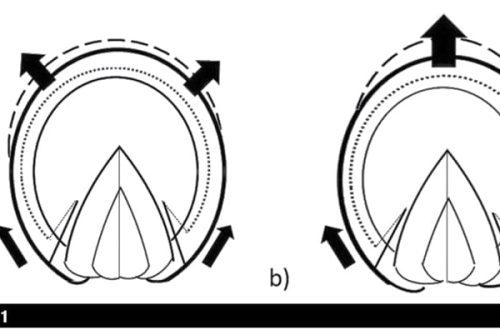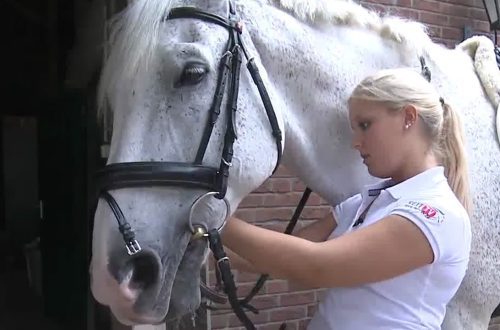
Secrets of walking
Secrets of walking
I believe that the vast majority of riders are aware of the fact that the horse must be walked before work begins – no book or brochure on riding is complete without mentioning that the horse must warm up the muscles on the walk before work. But, alas, often, apart from the phrase “Start with a step for 5-7 (or 10-12) minutes”, we don’t find anything else in them.
However, this topic is worth considering in more detail. So, how should a horse walk in order to achieve the maximum positive effect for both it and the rider?
Most often, walking before work looks like this: a bored rider who does not particularly follow his landing, and the same bored, almost stumbling horse with a rein hanging freely around his neck, sadly wander around the arena, without any purpose and direction. And such a rider in vain counts on the fact that he can normally warm up the muscles of the horse and his own muscles before training. Wasted time and dull movement have nothing to do with the necessary warm-up!
Your work with the horse begins from the moment you get into the saddle, so step before the main work – this is also work! You must warm up and stretch the horse as much as possible, bend him, remind him how to react to the controls. On the walk, everything happens slowly and accurately (the speed of the step allows this). By the time you get to the trot, the horse should already be supple and in tune with your commands.
So, sitting in the saddle and getting ready to walk, immediately gather yourself. Sit as correctly as possible, do not relax, straighten your back, disassemble the rein, do not throw it on the horse’s neck.
You don’t need to immediately dial briefly on the reins – maintain the contact that the horse will offer you. Let the reins be long, but you should already feel the horse’s mouth on the left and right (ideally, the same).
Start walking in straight lines without straightening the horse with the reins. Achieve straightness from it due to the influence of the leg, lock, lower back. Slowly “tune” the corridor, gradually increase the pace of the step, but do not rush the horse – just get him active.
As the horse gives way to you, pick up the reins. After working in straight lines, proceed to bending.
Come on volts. Start with circles of large diameter (20 meters). Work for them. Try to bend the horse at the back of the head. Gradually move on to serpentines, spirals, volts of smaller diameter. Constantly monitor how your horse reacts to the messages.
While working on the circle, in addition to the occiput curl, work on narrowing and widening the frame – move the horse wider, shorten the stride, move again. Practice stopping and starting to move, stopping again. This way you will be able to combine the work on warming up and stretching the muscles with the work on the reaction to your messages.
If the horse goes into work for a long time, work harder with the leg (if necessary, add the impact of a whip, spurs) up to a rise in a more active gait (trot or canter). Bring the horse into a walk, send again – the horse should respond immediately and actively.
We often get asked how much to walk? The minute numbers are different. Many instructors suggest spending 5-7 minutes per step. At the same time, athletes talk about at least 10-12 minutes. There are horses that, due to the nature of their state of health, need to walk longer (at least 20-30 minutes) – here you will need to follow the advice of a veterinarian.
There will be useful work for you as well. Get up in the stirrups. Relax your leg. Do not forget to control the horse, continue to work, standing in the stirrups. So you will tone your own muscles and ligaments. Giving the horse a little rest, stretch, do a few exercises (if the horse can walk calmly while you are distracted by yourself).
By pacing in this way, your horse will be set to work, responding to your commands correctly and without resistance when entering the trot. So, it would seem that a boring step will greatly facilitate your further training.
Valeria Smirnova.
 selfish 26th of October 2017
selfish 26th of October 2017Somehow I was taught differently, and starting with the terminology. It was customary to call a step between frisky reprises a pacing. At the beginning of work, we do not walk the horse, but walk. At the end, we walk. Volts on stepping – the coach would have torn off my head. At the first trot, they were not allowed to do them. Like the horse wasn’t warm enough. Even changes of direction at the first trot were ordered to be done only diagonally, so that the turn was at a very obtuse angle. Well, how to relax. If it’s just walking. The best reward for a horse is to leave it alone, to demand nothing for at least five minutes. That’s when she walked at least five minutes after the trot, then you can pick her up and start working at a walk. Answer
 Valeria Smirnova 5th of December 2017
Valeria Smirnova 5th of December 2017This is the gait of sport horses, which is used by athletes in Germany. There is a difference between walking horses in skating and training, where it is important not to scatter the horse before the start of the “training”, and horses in top sportswear. Answer
 selfish 5th of December 2017
selfish 5th of December 2017Then it is necessary to warn that this is not for everyone, but for the top sports form. And then the tone of your answer is as if only sports horses are horses, and for ordinary horses, training is not training. But for me, the news is that sports horses do not need to be warmed up, and they do not need to be relaxed either. Answer
 Valeria Smirnova 9th of December 2017
Valeria Smirnova 9th of December 2017Any athlete, not only involved in equestrian sports, knows that it is impossible to relax the body before the end of the workout. You can restore breathing by reducing the rhythm, but the tone cannot be lowered. Walking during training is work, just like the canter and trot. As for the rental, I basically do not write. Warm up the disabled, well, well. Answer
 selfish 9th of December 2017
selfish 9th of December 2017And I’m not an athlete for a minute. I ride for recreation. And yes, I work a horse. The purpose of the work is to achieve such behavior from the horse so that you can rest on horseback. In my opinion, the most worthy goal. About the disabled. My horse was a rental horse from two to sixteen years old, until I bought him back seven years ago. I don’t know what sport your horse does, but if by our age he retains a good physical shape, then I will say that you are doing great with him, and your sport is truly good for health. Answer
 Valeria Smirnova 9th of December 2017
Valeria Smirnova 9th of December 2017The year before last, I started on a horse that was 22 at the time. Under the child he rode a meter. This is the achievement of sports training. Answer
 selfish 10th of December 2017
selfish 10th of December 2017About this horse – respect. Actually, I am not against sports, and I do not deny that during sports work, many horses remain working for a long time, and this is very good. I was just pissed off by your hit-and-run. I assure you that rental horses can also retain their ability to work and please people for a long time. I propose to discard the assaults in the style of an athlete / non-athlete. Answer
 Valeria Smirnova 9th of December 2017
Valeria Smirnova 9th of December 2017And what kind of warning are you talking about? Warning that this is a warm-up for a normal, physically healthy horse that strides any diameter of circle at the start of work and does not fall apart? Recognize that you can take a horse under the saddle, whose back will fall off if you make a 20-meter turn? Answer
 selfish 9th of December 2017
selfish 9th of December 2017It was customary for us to call a turn of 20 meters not a volt, but a circle. In half the arena. And on the volts it was customary for us to bend the horse, and before bending, yes, warm it up. Answer
 Valeria Smirnova 9th of December 2017
Valeria Smirnova 9th of December 2017A turn is a turn, not a circle. Answer
 selfish 9th of December 2017
selfish 9th of December 2017Then what is 20 meters? If it’s a circle, then that would be the diameter, no? And if we are talking about a turn, then usually indicate the angle of rotation. It is measured in degrees, not meters. Answer
 Valeria Smirnova 9th of December 2017
Valeria Smirnova 9th of December 2017In degrees, the shoulder and the like are measured. A turn is described by the diameter of the circle it passes through. Can you tell me how many degrees it will be to rotate along a 20m circle?) Answer
 selfish 10th of December 2017
selfish 10th of December 2017They explained to me that a turn in a circle is a volt or a half-volt (race). And if its diameter is half an arena, then it is still a circle. Actually, we didn’t have such an element of “turn” (well, except perhaps “turns on the back”, “turns on the front”). There were also changes in direction through the middle, along the diagonals. The word “turn”, if it is not in place, is associated mainly with them. Answer
 Maria 5th of December 2017
Maria 5th of December 2017Well, I believe that this article is for everyone who WORKS with a horse, it requires something from it. Actually, this is stated at the beginning of the material. At the box office, the requirements are generally different – for most beginners – to work on their own fit and, in principle, to sit intact until the end of the workout. If the horse is working, then it must connect the brains from the very beginning. Actually, like the rider who works it. Actually, as for the volts. I don’t think that someone would start tearing their heads off if things were going well. let’s say about a diameter of 10m+…. Answer
 Valeria Smirnova 9th of December 2017
Valeria Smirnova 9th of December 2017And how to get out of the stall, turn in the stall, also 10 meters? or explain to a horse in a levada that it is not allowed to walk and make a turn in six-meter circles? It is necessary for sick horses and ignoramuses in the saddle to ban volts of small diameter. A healthy horse will easily perform a frequent (20 loops) serpentine walk with the right guidance. Answer
 selfish 9th of December 2017
selfish 9th of December 2017Well, ask again how they turn at the interchanges. Don’t you realize that it’s a little different? To put it mildly. As for the diameter of the volts under the top, yes, the smaller it is, the more dangerous it is. The warmer the horse is, the less dangerous it is. The better the rider sits in the saddle and controls the controls, the less dangerous it is. The faster the horse moves, the more dangerous it is. The bigger the horse, the more dangerous it is. The better the soil, the less dangerous it is (and the worse, the more). In general, there are many factors to consider. Answer
 Valeria Smirnova 9th of December 2017
Valeria Smirnova 9th of December 2017And what is the difference between turning when leaving the stall and turning under the saddle? Answer
 selfish 10th of December 2017
selfish 10th of December 2017The horse comes out of the stall on its own, and the task of the person is to keep at the same time so that the horse can comfortably turn around, while maintaining a safe position. Well, when the horse is under the saddle, the rider sits on top of it, respectively, they are both in a completely different position. No, well, I don’t know, of course, what size stalls you have, but in a 4 by 4 stall, I would not purposefully walk a horse. It’s not the same as just turning around. It’s kind of weird to explain it. Answer
 selfish 9th of December 2017
selfish 9th of December 2017Maria, horse work is not necessarily sports work. I was taught, and I think it is right, to alternate work and rest. I don’t think that work can only be called one in which the horse is generally not allowed to relax and rest for an hour in a row. And yes, since I am not an athlete, I myself would not have survived an hour without rest. Answer
 Valeria Smirnova 9th of December 2017
Valeria Smirnova 9th of December 2017If you trotted and then dropped the reins and let the horse go where and how he wanted, you told him that the work was done. She “turns off” the brain from work, her muscles begin to gradually relax. The heart returns to normal, chemical reactions slow down, and so on. And then bang and work again. And again the restoration of the working mode, only now you “after a relaxing walk” decided to continue at a gallop … ..
If during the reprise of the walk, the horse is kept in good shape and continues to walk, this will not happen and his body will be tuned to the canter and ready for it. Answer
 selfish 10th of December 2017
selfish 10th of December 2017In the five minutes between trot and canter, the horse is unlikely to return to normal mode. Before the usual mode, the horse first steps back for 10-20 minutes, and then defends for another hour. Answer





